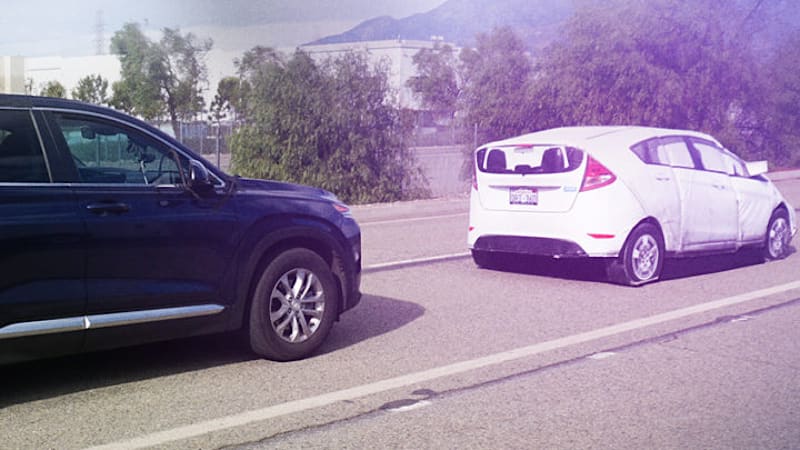Human drivers don’t necessarily see the road as well when it’s raining, and it turns out driver assist technology doesn’t either. The systems used to automatically brake and keep your car within its lane are significantly affected by rain, according to an AAA study released Thursday.
Researchers from the American Automobile Association found that automatic emergency braking, in several cases during tests conducted in simulated moderate to heavy rainfall, failed to detect stationary vehicles, resulting in crashes. Lane-keeping technology also fared poorly.
AAA warned drivers, who should always be vigilant about these systems, even in ideal conditions, not to rely on them in the rain.
“Vehicle safety systems rely on sensors and cameras to see road markings, other cars, pedestrians and obstacles on the road. So they are naturally more vulnerable to environmental factors like rain,” said Greg Brannon, AAA’s director of automotive engineering and industry relations. “The reality is that people don’t always drive around in perfect, sunny weather, so we need to expand the testing and take into account the things people deal with in their day-to-day driving.”
Advanced driver assistance systems, or ADAS, are common in newer vehicles. They don’t perform autonomous driving, but they can automate certain limited driving tasks, such as adaptive cruise control and staying centered on the lane. In tests by insurance groups, automatic emergency braking has been shown to significantly reduce rear-end collisions.
For its testing, AAA used a 2020 Buick Enclave Avenir, a 2020 Hyundai Santa Fe, a 2020 Toyota RAV4 and a 2020 Volkswagen Tiguan.
Not a single test car crashed into a stationary vehicle in dry, ideal conditions. But then researchers turned on the simulated rainfall — and 17% of test runs resulted in crashes at speeds of 25 mph (40 km/h). At 35 mph, the accident rate increased to 33%.
From there you can extrapolate to the hazards at highway speeds.
Researchers simulated rain in the vehicles’ field of view by using a device with a spray nozzle that obscured the sensors in the windshield, as shown in the photo above. This allowed them to keep the roadway dry. AAA noted that wet roads can lead to even higher crash rates in real driving conditions.
As for lane technology, vehicles crossed lane markings 37% of the time during ideal conditions in the AAA test — and that percentage rose to 69% once rain was added.
This is not the first AAA study to identify deficiencies in driver assistance systems. On the plus side, this study noted that just having a dirty or splashed windshield had little effect on the system’s sensors.
AAA emphasizes that while these systems have potential, they are no match for an observant driver. For riding in the rain, AAA offers these tips:
- Keep the windshield clean and make sure the wipers don’t streak the windshield. Slow down and avoid hard braking and sharp turns. If possible, follow the tracks of other vehicles. Increase the following distance to 5-6 seconds behind the vehicle in front. Do not use cruise control to stay alert and react quickly if the car’s tires lose traction. If the car starts to aquaplane, release the accelerator pedal to gradually reduce speed until the tires regain traction and continue to watch and steer where you want to go. Do not apply the brakes – this may cause further loss of traction.
Reuters is used in this report.
